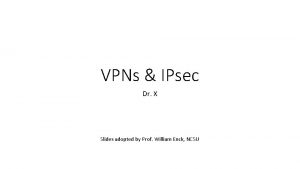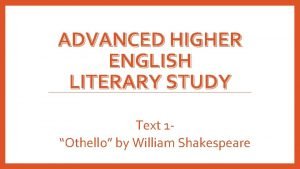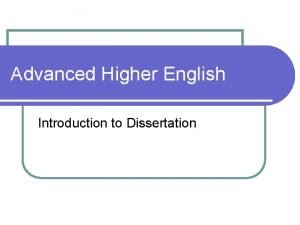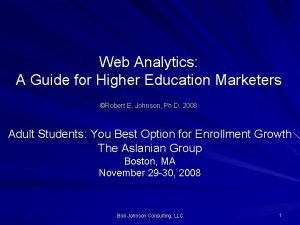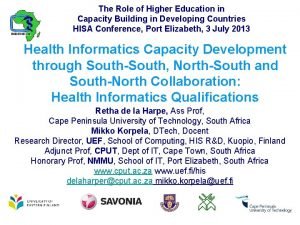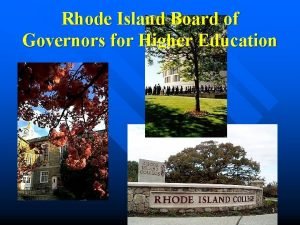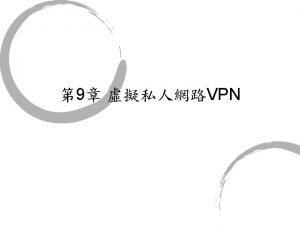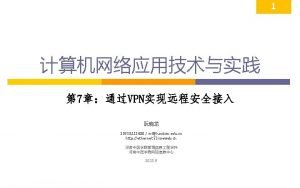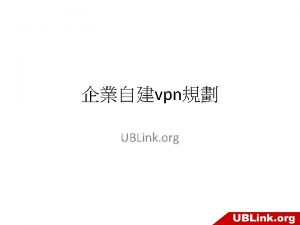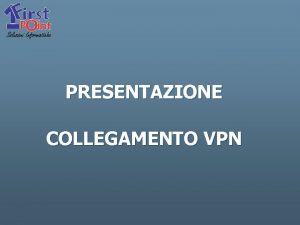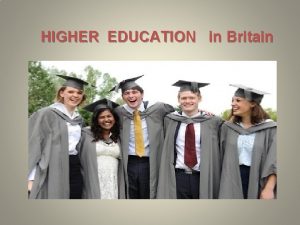VPN Usage in Higher Education A Study to








- Slides: 8

VPN Usage in Higher Education: A Study to Mitigate Risk Related to Public Wi-Fi Usage Deanna House University of Nebraska Omaha Emil Radu University of Tampa

Impact/Uniqueness of University Setting • • Open policy related to sharing (NCSC Warning, 2019) Lack of security audits (Aarthy, Mohan, & Sethumadhavan, 2017) Universities have a variety of data (Bongiovanni, 2019) Limitations due to academic freedom (Aberbach & Christensen, 2018)

Higher Education Cyber Attacks • Various threat agents and motivations

Public Wi-Fi • Individuals need to rely on public Wi-Fi while travelling (Sombatruang, Onwuzurike, Sasse, & Baddeley, 2019). • Prior research explored data leakage/sensitive information leakage (Sombatruang et al. , 2019; Atkinson et al. , 2018)

VPN • Secure/Encrypted Communication • Necessary when using public Wi-Fi • University should enforce its use (Sombatruang et al. , 2016) • Use approved VPN service (leakages found by Molina et al. , 2019)

Methodology/Limitations • COVID-19 and its impacts to higher education • Pre-COVID-19 usage was on average 30 users per day, mainly by Information Technology & Security users • Exploring usage in one institution, but hope to focus on a broader population of users in higher education

References Aarthy, D. A. , Mohan, A. K. & Sethumadhavan, M. 2017. “Wireless Security Auditing: Attack Vectors and Mitigation Strategies”, 7 th International Conference on Advances in Computing & Communications, ICACC, August 22 – 24, Cochin, India. Aberbach, J. D. & Christensen, T. (2018). “Academic Autonomy and Freedom Under Pressure: Severely Limited, or Alive and Kicking? ” Public Organization Review, 18: 4, pp. 487 -506. Atkinson, J. S. , Mitchell, J. E. , Rio, M. , & Matich, G. (2018). Your Wi. Fi is Leaking: What Do Your Mobile Apps Gossip About You? Future Generation Computer Systems, 80, 546 – 557. Molina, M. D. , Gambino, A. , & Sundar, S. S. 2019. “Online Privacy in Public Places: How Do Location, Terms and Conditions, and VPN Influence Disclosure? ”, in CHI 2019, May 4 – 9, Glasgow, Scotland UK. NCSC Warns UK Universities of Cyberthreats. 2019. Network Security Newsletter, 10, pp. 1 -2. Sombatruang, N. , Onwuzurike, L. , Sasse, M. A. , & Baddeley, M. 2016. “Why Do People Use Unsecure Public Wi-Fi? An Investigation of Behaviour and Factors Driving Decisions”, STAST ’ 16, December 5 -6, Los Angeles, CA. Sombatruang, N. , Onwuzurike, L. , Sasse, M. A. , & Baddeley, M. 2019. “Factors Influencing Users to Use Unsecured Wi-Fi Networks: Evidence in the Wild”, in 12 th ACM Conference on Security and Privacy in Wireless and Mobile Networks (Wi. Sec ’ 19), May 15 – 17, Miami, FL.

Deanna House University of Nebraska Omaha deannahouse@unomaha. edu Linked. In: deannahousephd Emil Radu University of Tampa eradu@ut. edu

